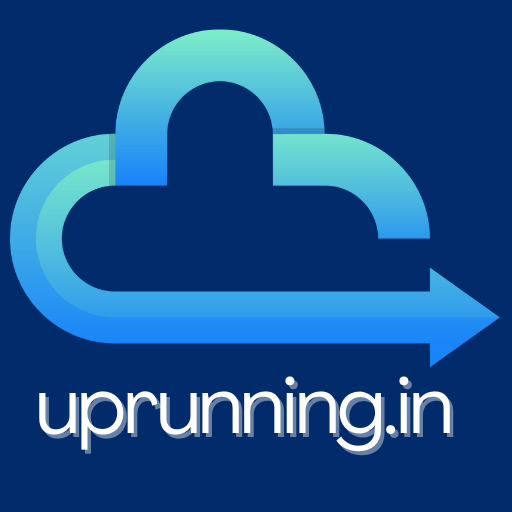Artificial Intelligence (AI) is evolving faster than ever before—and with it, the need for enterprises to build, deploy, and scale AI solutions with efficiency and security. Azure AI Foundry is Microsoft’s groundbreaking platform designed to accelerate enterprise adoption of generative AI through a unified, scalable, and secure foundation. But where do developers begin?
This guide will walk you through everything you need to know to start building with Azure AI Foundry—from understanding its architecture to deploying your first intelligent workflow.
🚀 What is Azure AI Foundry?
Azure AI Foundry is a Microsoft solution that helps organizations build custom AI copilots and generative AI solutions using a blend of:
- Pre-trained foundation models (from Azure OpenAI and OSS)
- Custom fine-tuning capabilities
- Enterprise-grade security & governance
- Multi-cloud and hybrid deployment options
It serves as a unified development environment to integrate large language models (LLMs) into your existing systems—think of it as your copilot factory.
👨💻 Who is This Guide For?
This onboarding guide is for:
- AI/ML developers and data scientists
- Solution architects and product teams
- IT and DevOps professionals involved in AI deployment
Whether you’re experimenting with your first model or scaling a production-grade AI assistant, this guide will help you ramp up with confidence.
🔧 Setting Up Your Azure AI Foundry Environment
Step 1: Pre-requisites
Before you get started, ensure you have:
- An active Azure subscription
- Access to Azure AI Studio (public preview)
- Permissions to deploy Azure resources (e.g., Azure OpenAI, Azure ML, Key Vault)
Tip: If your organization uses Microsoft Entra ID (formerly Azure AD), make sure to configure role-based access control (RBAC) appropriately for team members.
Step 2: Access Azure AI Studio
- Log in to Azure AI Studio.
- Navigate to Projects and select Create Project.
- Choose a project type:
Prompt Flow,Model Fine-Tuning, orCopilot Deployment.
Azure AI Studio is where much of the Foundry magic happens. It’s the centralized workspace for:
- Building prompts and flows
- Fine-tuning models
- Managing datasets and pipelines
- Deploying and monitoring copilots
Step 3: Connect Your Data
Azure AI Foundry supports secure connections to a variety of enterprise data sources including:
- Microsoft Graph
- Azure SQL / Cosmos DB
- Blob Storage
- Dataverse
- SharePoint / OneDrive
- 3rd-party APIs
Use Azure AI Search to enrich your LLM with retrieval-augmented generation (RAG), a common technique for grounding generative models in accurate, contextual data.
Real-world Example:
A healthcare provider uses Azure AI Search to index patient FAQs and support documents, enabling a chatbot copilot to provide accurate answers based on curated knowledge, not just generalized model data.
Step 4: Choose and Customize Your Model
Azure AI Foundry provides access to:
- OpenAI models (e.g., GPT-4, GPT-3.5)
- OSS models (e.g., Llama2, Mistral)
- Your own fine-tuned models
Developers can quickly build prompt flows using Azure’s intuitive UI or code interface (Python SDK / REST API).
Step 5: Build Your First AI Copilot
Here’s a simplified workflow:
- Define the business problem (e.g., automate email summarization).
- Select a base model (e.g., GPT-3.5 Turbo).
- Create a prompt flow (with input/output schema).
- Connect to data sources (RAG, APIs).
- Test the copilot interface.
- Set up evaluation metrics (e.g., response accuracy, latency).
- Deploy securely with Azure App Service or Teams integration.
🔍 Monitoring & Governance
Use built-in tools like:
- Prompt Flow Evaluation Metrics
- Human-in-the-loop feedback
- Versioned deployments
- Microsoft Purview integration for data compliance
This ensures that your AI solutions are not only performant—but also responsible and auditable.
✅ Best Practices for New Developers
- Start small: Begin with a focused use case like automating document summaries or generating insights from internal reports.
- Use RAG wisely: Ensure your LLMs are grounded in accurate, enterprise data.
- Secure everything: Encrypt all communication and use managed identities for access control.
- Monitor continuously: Track usage and collect user feedback to improve model performance.
💡 Pro Tip: Use Azure Copilot Stack
Azure AI Foundry leverages the Azure Copilot Stack, which integrates:
- Azure AI Studio
- Azure OpenAI Service
- Azure ML for model ops
- Azure Data Lake for storage
- Microsoft Purview for compliance
This makes it easy to build and maintain AI applications without re-inventing the wheel.
🎯 Final Thoughts
Azure AI Foundry empowers developers to move from experimentation to production-grade AI with confidence. Its low-code interfaces, powerful integrations, and enterprise-ready architecture make it one of the most developer-friendly platforms for building intelligent applications at scale.
If you’re just starting your AI journey—or looking to scale your team’s innovation—there’s no better time to explore Azure AI Foundry.
![]()

Leave a Reply